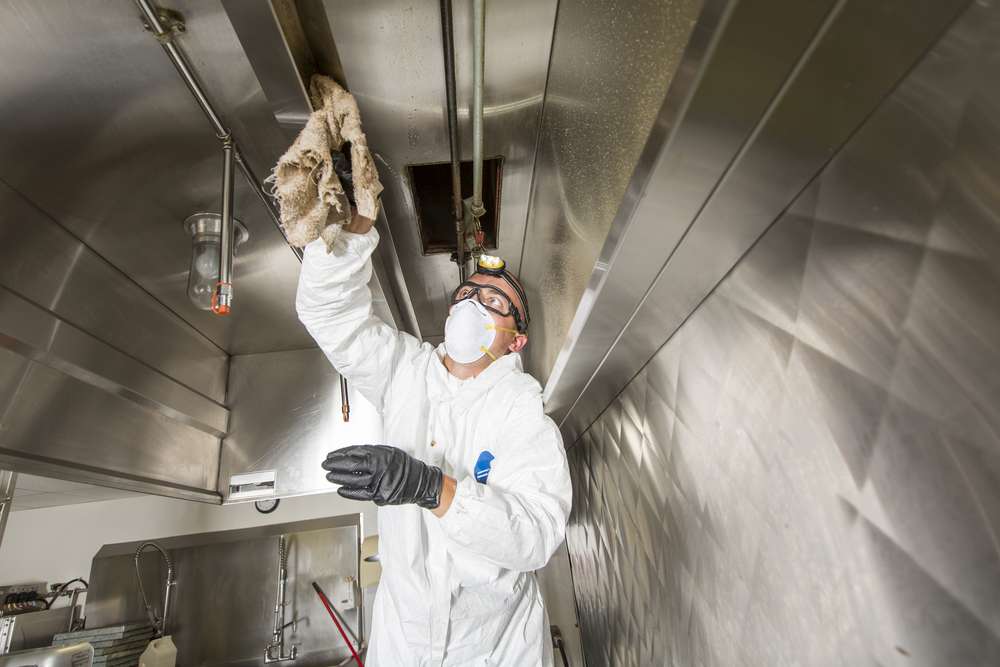Best Way to Clean a Commercial Kitchen?
Maintaining a spotless and hygienic commercial restaurant kitchen is not just a matter of aesthetics. It’s a critical component of ensuring food safety, adhering to industry standards, and providing a healthy environment for both staff and customers. Below, we’ll discuss the best practices, tools, and techniques for cleaning a commercial kitchen, with a specific focus on the effectiveness and safety of steam cleaning.
What is Best When Cleaning a Commercial Kitchen?
Industry Standards And Regulations For Cleaning A Commercial Kitchen
Cleaning a commercial kitchen involves adhering to industry standards and regulations. Health codes dictate the cleanliness and hygiene levels that must be maintained to ensure the safety of food preparation. Compliance with these standards is not only a legal requirement but also essential for the reputation and success of the establishment.
Which Tools And Equipment Are Essential For Effective Restaurant Cleaning?
Investing in the right tools and equipment is crucial for effective restaurant cleaning. Commercial kitchen cleaning requires a combination of manual and mechanical tools. Essentials include:
- Scrub brushes and scouring pads: For manual scrubbing of surfaces.
- Commercial degreasers: To break down stubborn grease and grime.
- High-pressure sprayers: For cleaning hard-to-reach areas and equipment.
- Steam cleaners: An increasingly popular and effective tool for deep cleaning.
How Do You Sanitize a Restaurant Kitchen?
How Does Sanitizing Help Maintain A Hygienic Environment In A Restaurant Kitchen?
Sanitizing goes beyond cleaning; it involves reducing the number of microorganisms on surfaces to safe levels. In a restaurant kitchen, proper sanitization is critical for preventing the spread of foodborne illnesses and maintaining a hygienic environment.
What Are The Proper Techniques For Sanitizing Surfaces, Utensils, And Equipment?
- Chemical Sanitizers: Using sanitizing solutions with the appropriate concentration of chemicals.
- Heat Sanitization: Applying heat to utensils and equipment, often achieved through commercial dishwashers.
- Steam Cleaning: An effective method that not only cleans but also sanitizes surfaces, eliminating bacteria and germs.
How Can You Prevent Cross-Contamination And Foodborne Illnesses?
Cross-contamination is a significant concern in restaurant kitchens. To prevent it:
- Designate specific tools for different tasks: Have separate cutting boards and utensils for raw and cooked foods.
- Implement color-coded systems: Use different colored cutting boards and utensils to avoid confusion.
- Train staff on proper procedures: Educate employees on the importance of preventing cross-contamination and the specific protocols to follow.
Is Steam Cleaning Safe for Commercial Kitchen Equipment?
Why Is Steam Cleaning Considered An Effective Method For Cleaning A Restaurant Kitchen?
Steam cleaning is hailed as a highly effective method for cleaning a restaurant kitchen. The power of steam lies in its ability to penetrate surfaces and lift dirt, grease, and bacteria. It is particularly advantageous for hard-to-reach areas and intricate equipment.
Is Steam Cleaning Safe For Commercial Kitchen Equipment?
Commercial kitchen equipment cleaning: When performed by trained professionals and with the right equipment, steam cleaning is safe for commercial kitchen equipment. It uses water vapor, eliminating the need for harsh chemicals that may leave residues on surfaces. Steam cleaning also reduces the risk of chemical exposure for kitchen staff.
How Does Steam Cleaning Efficiently Remove Grease, Grime, And Bacteria?
Steam cleaning is effective at removing grease, grime, and bacteria by using high-temperature steam. The intense heat penetrates surfaces, breaking down and loosening stubborn residues. As steam makes contact, it not only dissolves grease and grime but also sanitizes, effectively eliminating bacteria and germs, leaving surfaces thoroughly clean and hygienic.
What Factors Should Be Considered When Choosing A Steam Cleaner For Commercial Kitchen Equipment?
When choosing a steam cleaner for commercial kitchen equipment, consider:
- Temperature and pressure settings: Ensure the steam cleaner can reach the necessary temperature and pressure for effective cleaning.
- Attachments and accessories: Opt for steam cleaners with a variety of attachments to tackle different surfaces and equipment.
- Ease of use and maintenance: Choose a steam cleaner that is user-friendly and easy to maintain for consistent performance.
How Effective is Kitchen Steam Cleaning?
What Are The Results Of Steam Cleaning On Different Surfaces And Materials?
- Stainless Steel: Steam cleaning effectively removes grease, fingerprints, and stains from stainless steel surfaces.
- Tile and Grout: The high-temperature steam penetrates grout and lifts dirt and stains, leaving tile surfaces sparkling clean. This avoids the use of commercial kitchen floor cleaners.
- Oven Interiors: Steam cleaning is highly effective in removing baked-on grease and food residues inside ovens.
How Does Steam Cleaning Compare To Traditional Cleaning Methods In Terms Of Effectiveness?
Compared to traditional cleaning methods, steam cleaning offers several advantages:
- Chemical-Free: Steam cleaning eliminates the need for chemical cleaners, reducing environmental impact and potential chemical exposure.
- Efficiency: The power of steam allows for quicker and more efficient cleaning of surfaces and equipment.
- Versatility: Steam cleaners are versatile and can be used on a variety of surfaces, making them a valuable tool in a commercial kitchen.
Why Choose Steam Cleaning For Your Restaurant Kitchen and Oven?
What Are The Advantages Of Incorporating Steam Cleaning Into Your Cleaning Routine?
- Efficient Grease Removal: Steam effectively breaks down and lifts grease from surfaces, ensuring a thorough clean.
- Reduced Chemical Usage: With steam cleaning, there’s a decreased reliance on chemical cleaners, promoting a safer and eco-friendly cleaning process.
- Sanitization: Steam not only cleans but also sanitizes, eliminating bacteria, viruses, and germs.
- Versatility: Steam cleaners come with various attachments for different tasks, making them versatile tools in a commercial kitchen.
How Does Steam Cleaning Help Prolong The Lifespan Of Kitchen Equipment?
Regular steam cleaning contributes to the longevity of kitchen equipment:
- Preventing Rust: Steam cleaning helps prevent rust formation on metal surfaces.
- Reducing Wear and Tear: By effectively removing residues, steam cleaning reduces wear and tear on equipment.
Commercial Kitchen Cleaners for Your Restaurant
The best way to clean a commercial restaurant kitchen involves a combination of following industry standards, the use of essential tools, proper sanitization techniques, and, increasingly, the incorporation of steam cleaning. Steam cleaning stands out as a safe, efficient, and versatile method that not only ensures a spotless kitchen but also contributes to the overall health and longevity of your commercial kitchen equipment. Consider embracing the power of steam for a cleaner, safer, and more sustainable restaurant kitchen environment.
Contact our professional restaurant cleaners for a quote to bring your kitchen back to its spotless state.

